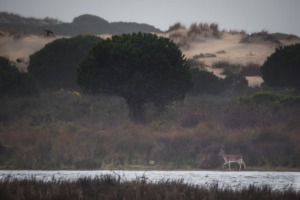Doñana, a site of international importance for the Greater Flamingos, is threatened by the extraction of underground water for agriculture. Scientists and NGOs have called on the Andalusian parliament to reverse its decision to authorize the extension of irrigated areas for intensive agriculture. Hopefully, for Doñana and the flamingos, this appeal will be heard.
The Tour du Valat, along with Living Rivers Europe [1], co-signed a letter sent to the European Parliament last April to publicly denounce the serious damage to this wetland.
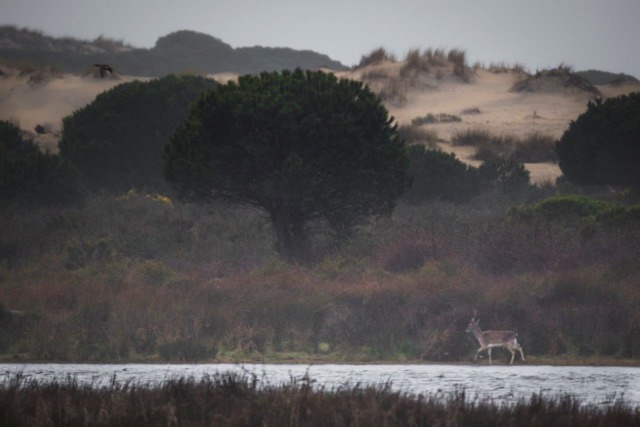
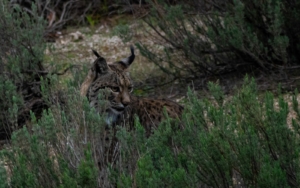
Natural marshes and temporary ponds in Doñana, at the mouth of the Guadalquivir River in southern Andalusia, Spain, are a global hotspot for biodiversity and support thousands of breeding birds and millions of migratory birds. The area supports more wintering wildfowl than anywhere else in Europe and is home to many globally threatened species, including the marbled duck (Marmaronetta angustirostris) and common pochard (Aythya ferina). Doñana is also famous for its apex predators, including the Iberian endemic Spanish imperial eagle (Aquila adalberti) and the endangered Iberian lynx (Lynx pardinus).
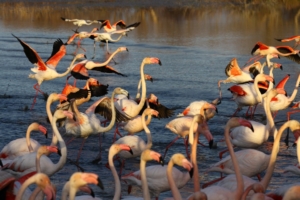 Greater Flamingos occasionally nest here, but Doñana is above all an extraordinary feeding ground for this species, which prefers to nest in Fuente de Piedra (a lagoon located about 100 km to the north). During the breeding season the flamingos that nest in Fuente de Piedra do not hesitate to travel hundreds of kilometers to feed in the particularly rich wetlands of the Guadalquivir delta.
Greater Flamingos occasionally nest here, but Doñana is above all an extraordinary feeding ground for this species, which prefers to nest in Fuente de Piedra (a lagoon located about 100 km to the north). During the breeding season the flamingos that nest in Fuente de Piedra do not hesitate to travel hundreds of kilometers to feed in the particularly rich wetlands of the Guadalquivir delta.
Doñana became internationally famous in the 1950s, when its spectacular bird concentrations were threatened by development plans (for example, drainage and the planting of exotic Eucalyptus for pulp). A pioneering campaign in the early days of the World Wide Fund for Nature (WWF) with Luc Hoffmann, Tour du Vala founder, led to the initial declaration of a scientific reserve of about 7,000 ha in 1964, primarily to save birds. The reserve was founded along with the Doñana Biological Station (arguably the most prestigious ecological and evolutionary research institution in Spain today), testimony to the immense value of Doñana for science in general and for training conservation biologists in particular. The original protected area was later expanded and declared a national park, and then a UNESCO (United Nations Educational, Scientific and Cultural Organization) World Heritage Site, which lies within a larger ‘Natural Space’ protected within the Natura 2000 Network and the Ramsar Convention2. Despite the hugely important biodiversity of Doñana, its existence remains threatened by local anthropogenic stressors — particularly the expansion of intensive agriculture, and resulting groundwater extraction and pollution5 Groundwater that naturally supports the marshes and ponds in Doñana has fuelled rapid greenhouse expansion surrounding the park, in Europe’s biggest strawberry production area.
Despite the repeated requests by UNESCO to stop illegal groundwater extraction (the cataloguing of over 1,000 illegal boreholes by the WWF) little has been done to address the problem. The effect of aquifer exploitation is most obvious in the disappearing dune ponds, which directly depend on the water table and hold endemic plankton species and rich communities of amphibians and dragonflies8. However, when the aquifer recharges it also overflows into the marsh system that supports the waterbirds includind Greater Flamingos, and this flow has been greatly reduced by the boreholes5. To add insult to injury, on 9 February 2022 the Andalusian regional parliament voted to support a plan to legalize 1,500 ha of irrigated land and thus legitimize the operations of illegal farmers — despite open opposition from the Spanish central government, EU, UNESCO and several nongovernmental organizations.
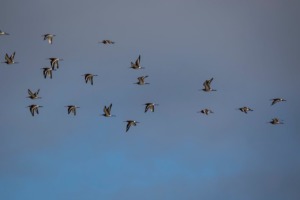
This winter (2021–2022), with rainfall well below average, only 5% of the marsh area flooded, and waterbird numbers were exceedingly low compared to previous years. Such dry winters are not unknown in Doñana, but their effect on wetland biodiversity is intensified by loss of groundwater contributions. Winter precipitation is expected to be reduced in the coming years, combined with increased temperatures (and thus evaporation), according to projections by the Intergovernmental Panel on Climate Change. Boreholes will only exacerbate the problem at a time when nature will need water.
From the article:
Camacho C., Negro J.J., Elmberg J., Fox A.D., Nagy S., Pain D.J., Green A.J. 2022. Groundwater extraction poses extreme threat to Doñana World Heritage Site. Nature Ecology and Evolution [cited 2022 Apr 26]. doi: 10.1038/s41559-022-01763-6 [2]
